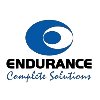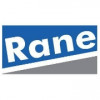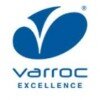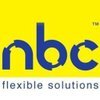
i
Gabriel India
Filter interviews by
Clear (1)
Gabriel India Team Leader Tooling Interview Questions and Answers
Gabriel India Team Leader Tooling Interview Experiences
1 interview found
I applied via Company Website and was interviewed before Oct 2019. There was 1 interview round.
Interview Questionnaire
2 Questions
- Q1. If some problem come in working area, So that time what you do ?
- Q2. Draw this type clutch mechanism which we use in clamping, because its mostly used and reworked in our company?
- Ans.
A clutch mechanism used for clamping in our company.
The clutch mechanism is used for clamping purposes.
It is commonly reworked in our company.
The mechanism allows for easy engagement and disengagement of the clamping action.
It provides a secure and reliable hold on the workpiece being clamped.
Examples of clutch mechanisms used in clamping include friction clutches, jaw clutches, and magnetic clutches.
Interview Preparation Tips
Don't focus but Covered your eyes contacts and smile face.
Don't strain your mind on unknown question, which you don't answer, just try , but don't feel.
Continuous answers, just tell what you know, don't react or struck , its determine completely unknown about this question.
Top trending discussions






Interview questions from similar companies

I applied via Walk-in and was interviewed before Sep 2020. There was 1 interview round.
Interview Questionnaire
8 Questions
- Q1. What's your special with others
- Ans. I am not compare anyone with me, only learn from others what I need.
- Q2. Are you fit this post
- Ans.
Yes, I am fit for the post of Quality Engineer.
I have a strong background in quality engineering with experience in implementing quality control processes.
I am skilled in conducting quality audits and inspections to identify areas for improvement.
I have expertise in using quality tools and methodologies such as Six Sigma and Lean principles.
I have successfully led cross-functional teams to resolve quality issues and im...
- Q3. In future we found you are not suitable to that place, what your answer
- Ans. No, without my service, you can't judge me, not only me , anyone
- Q4. Describe yourself
- Ans.
I am a detail-oriented Quality Engineer with a strong background in ensuring product quality and process improvement.
Experienced in conducting quality audits and inspections
Proficient in using statistical analysis tools to identify and resolve quality issues
Skilled in developing and implementing quality control procedures
Strong problem-solving and analytical skills
Excellent communication and teamwork abilities
- Q5. How much profit to us by you
- Ans. From me , you can expect profitable profit. I assured that .
- Q6. What's your bad habits
- Ans.
I tend to procrastinate and sometimes struggle with time management.
Procrastination
Time management
Difficulty prioritizing tasks
Occasional lack of focus
- Q7. Any more questions( HR )
- Ans. Yes, can i work this organization is my own.
- Q8. Suppose we rejected you, what you think
Interview Preparation Tips

I applied via Campus Placement and was interviewed in Oct 2020. There was 1 interview round.
Interview Questionnaire
1 Question
- Q1. What kind of questions asked an scl management?
Interview Preparation Tips

I applied via Recruitment Consultant
Interview Questionnaire
1 Question
- Q1. Mechanical engineering
Interview Preparation Tips

I applied via Naukri.com and was interviewed before Aug 2021. There were 2 interview rounds.

Aptitude test content core electrical maintenance questions
Interview Preparation Tips

Quality Engineer Interview Questions & Answers
Endurance Technologiesposted on 5 Dec 2021
I applied via Referral and was interviewed before Dec 2020. There was 1 interview round.
Interview Questionnaire
5 Questions
- Q1. Quality relative present
- Ans.
Quality is a crucial aspect of any product or service in the present times.
Quality is a key factor in customer satisfaction and loyalty.
Quality control measures ensure that products meet the required standards.
Quality assurance processes help in identifying and addressing potential issues before they become major problems.
Quality management systems like Six Sigma and Lean help in improving overall quality and efficienc...
- Q2. Quality related
- Q3. Quality mein kaun kaun se tool use karte hain
- Q4. Quality ke gas
- Q5. year ke bare mein
Interview Preparation Tips

Quality Engineer Interview Questions & Answers
Endurance Technologiesposted on 9 Oct 2021
I applied via Recruitment Consultant and was interviewed before Oct 2020. There was 1 interview round.
Interview Questionnaire
2 Questions
- Q1. Seven QC tools
- Ans.
Seven QC tools are a set of basic quality control tools used to identify and solve quality problems.
Check sheets
Control charts
Histograms
Pareto charts
Scatter diagrams
Stratification
Cause-and-effect diagrams
- Q2. Pareto Analysis
Interview Preparation Tips

I applied via Naukri.com and was interviewed before Aug 2020. There was 1 interview round.
Interview Questionnaire
2 Questions
- Q1. Technical
- Q2. Procurement
Interview Preparation Tips

Quality Engineer Interview Questions & Answers
Samvardhana Motherson Groupposted on 19 May 2021
I applied via Naukri.com and was interviewed in Nov 2020. There were 4 interview rounds.
Interview Questionnaire
2 Questions
- Q1. Tell me something about you
- Q2. Which company do u past work
Interview Preparation Tips

Interview Questionnaire
4 Questions
- Q1. Personal and functional
- Q2. About your job description and processes and your achievements
- Q3. Your plus and minus
- Q4. Senior Management Intraction on the basis of personal, behavioral, backgrounds,job function and achievements.
Recently Viewed
Tell us how to improve this page.
Gabriel India Interviews By Designations
- Gabriel India Trainee Operating Engineer Interview Questions
- Gabriel India Production Engineer Interview Questions
- Gabriel India Oprating Engineer Interview Questions
- Gabriel India Junior Engineer Interview Questions
- Gabriel India Engineer Interview Questions
- Gabriel India Production Interview Questions
- Gabriel India Quality Inspector Interview Questions
- Gabriel India Quality Engineer Interview Questions
- Show more
Interview Questions for Popular Designations
- Tool Room Engineer Interview Questions
- Tool Engineer Interview Questions
- Tool & DIE Maker Interview Questions
- Tool Maker Interview Questions
- Tool Room Incharge Interview Questions
- Tool Room Manager Interview Questions
- Senior Engineer Tool Room Interview Questions
- Tool & DIE Maker(Tool Room) Interview Questions
- Show more
Interview Questions from Similar Companies
Fast track your campus placements
|
Junior Engineer
1.2k
salaries
| ₹0 L/yr - ₹0 L/yr |
|
Oprating Engineer
516
salaries
| ₹0 L/yr - ₹0 L/yr |
|
Production Engineer
233
salaries
| ₹0 L/yr - ₹0 L/yr |
|
Assistant Manager
218
salaries
| ₹0 L/yr - ₹0 L/yr |
|
Engineer
218
salaries
| ₹0 L/yr - ₹0 L/yr |

Bharat Forge

Samvardhana Motherson Group

Sundaram Clayton

Rane Holdings
- Home >
- Interviews >
- Gabriel India Interview Questions >
- Gabriel India Team Leader Tooling Interview Questions















